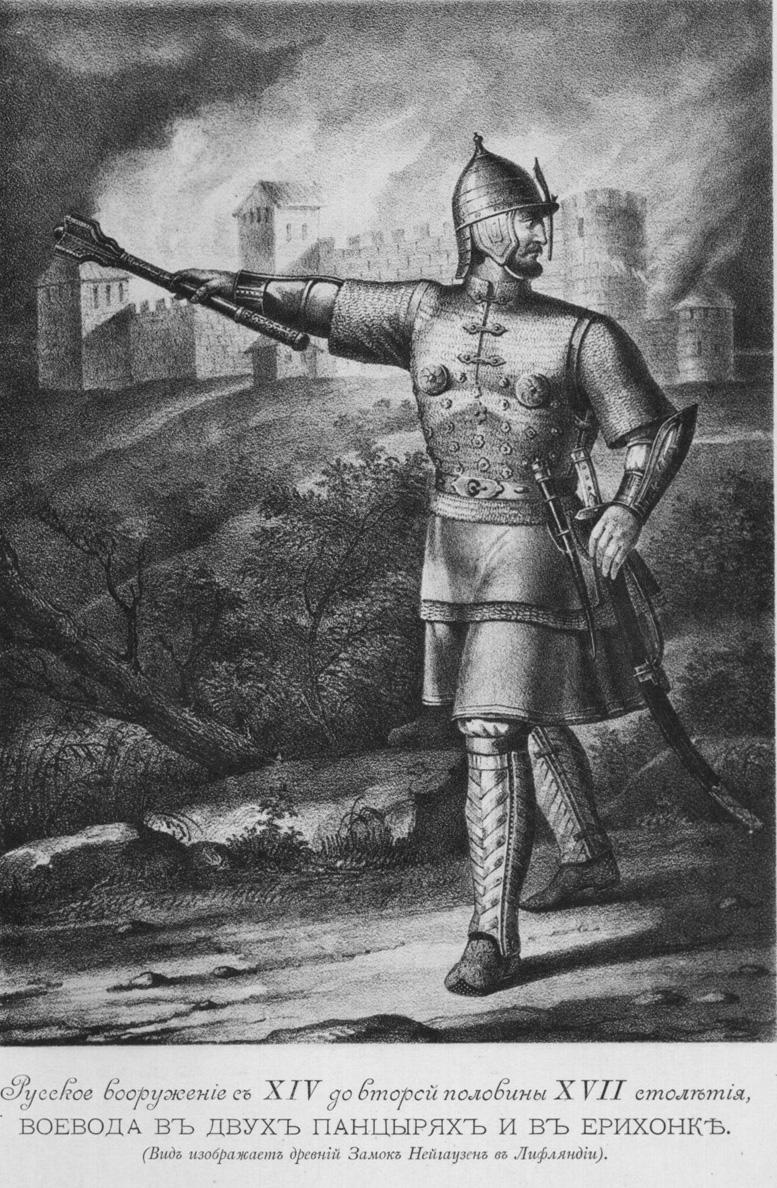Illustrations by Viskovatov
Voyevode (commander) in two Pantsiri (mail shirts) and Yerikhonka (conical pointed helmet).
(Ancient castle of Neilauzen in Livonia).
He carries a Bulava (mace) as symbol of his authority.
His forearms are protected by Naruchi (vambraces) and his calves by Buturliki (greaves).
On his belt he carries both Nosh (knife) and Sabel (sabre).

ВОЕВОДА ВЪ ДВУХЪ ПАНЦЫРЯХЪ И ВЪ ЕРИХОНКЂ
Russian armament from the 14th century until the second half of the 17th century.
Voyevode (commander) in two Pantsiri (mail shirts) and Yerikhonka (conical pointed helmet).
(Ancient castle of Neilauzen in Livonia).
He carries a Bulava (mace) as symbol of his authority.
His forearms are protected by Naruchi (vambraces) and his calves by Buturliki (greaves).
On his belt he carries both Nosh (knife) and Sabel (sabre).
Lithograph 100 in "Historical description of the clothes and weapons of Russian troops" by Viskovatov, 2nd edition published in 1899.
Aleksandr Vasilíevich Viskovatov, Born April 22, 1804; died February 27, 1858, in St. Petersburg. Russian military historian.
Viskovatovís most important work, A Historical Description of the Uniform and Weapons of Russian Troops (vols. 1-30, 1841-62; 2nd ed., vols. 1-34, 1899-1948), is based on an enormous amount of archival material.
Source
Next: Russian Voyevode (commander) in Zertsalo (armour vest with centre plate) and Yerikhonka (conical pointed helmet).
Back to Illustrations from "Historical description of the clothes and weapons of Russian troops" by Viskovatov

